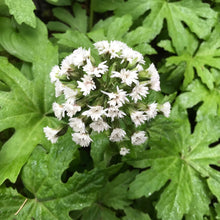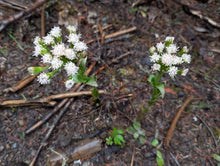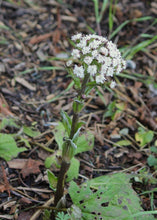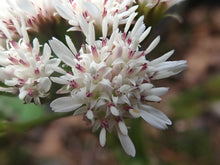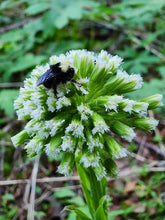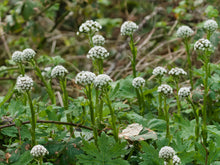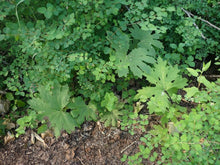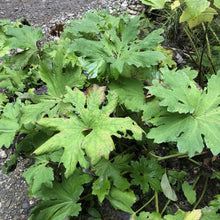
Petasites frigidus var. palmatus
Coltsfoot, is a low-growing, spreading perennial that thrives in moist, shady environments such as streambanks and woodland gardens. In early spring, its curious, tightly clustered pink to purplish-white flowers emerge on stout spikes, before the leaves. They are a weird wonder to behold. Interestingly, it produces separate male and female flower heads; females that contain fertile pistils and no stamen or rays and males that are sterile with short rays. After the flowers have flaunted their unique splendor, its super-sized, deeply lobed leaves unfurl, forming a lush green groundcover that remains attractive throughout summer. This plant not only stabilizes soil and controls erosion in moist to wet areas with its dense root system, but also supports pollinators with its nectar-rich blooms, making it a valuable addition to shade gardens, rain gardens, or riparian restoration projects.
- Plant type/canopy layer: deciduous, perennial, herbaceous plant
- Size at maturity: up to 20” tall, spreading laterally via rhizomes
- Light requirements: part sun/part shade, full shade
- Moisture requirements: moist to wet soils
- Bloom time: March - June (statewide and in the Portland Metro area). Blooms can occur as late as August at high elevations and at the northern extent of its range.
- Growth rate/ease: fast growth rate, easy to grow
- Wildlife support: flowers attract and provide nectar for adult butterflies, bees and other insect pollinators; overall plant is a caterpillar host and larval food source for native butterflies and moths
- Native habitat/range: grows in moist meadows, swamps, streambanks, mixed evergreen forests and other wet areas, from Alaska to California (including British Columbia), east across the northern half of North America to the Atlantic Coast. In Oregon and Washington, it grows on both sides of the Cascade crest from sea level to 1400m. Portland Plant List - yes.
-
Special features & uses: groundcover; deer resistant; landscape uses include woodland gardens, raingardens and shady pollinator gardens
- Ethnobotany: "Many Pacific Northwest tribes (Alaska Native, Lummi, Quileute, Quinault, and others) have taken a decoction of roots as an emetic and to treat tuberculosis. Raw roots have been eaten to cure coughs. An infusion of smashed roots has been used as a wash for swollen areas and sore eyes. Leaves have been used as a cooking aid, a storage aid, tobacco flavoring, and mixed with other greens for food. A poultice of warmed leaves has been used to treat rheumatism. An infusion of dried leaves has been used to treat colds, head congestion, and chest congestion. A compound containing this plant has been used to treat skin sores. The cotton-like seed heads have been used as mattress stuffing." courtesy of Washington Native Plant Society.
Gardening with Coltsfoot: Coltsfoot thrives in partial to full shade and any type of soil as long as sufficient moisture is available, making it ideal for damp, low-lying areas, along a streambank, in raingardens or woodland gardens. In a habitat garden, this plant works beautifully beneath taller plants like ferns and shrubs, creating a lush, whimsical feel. Be sure to provide enough space for its spreading habit, as it can form large colonies over time. Providing supplemental water during the summer drought will encourage it to stay lusher, longer. Without supplemental moisture, it will likely survive just fine, simply dying back sooner in the season and re-emerging next spring.
Photo Credit 1 (flowers & leaves): © rappman, some rights reserved (CC-BY)
Photo Credit 2 (flowers first): © Zachary M.C., some rights reserved (CC-BY)
Photo Credit 3 (flower stalk): © Chris Sulots, some rights reserved (CC-BY)
Photo Credit 4 (flower macro): © Nolan Exe, some rights reserved (CC-BY)
Photo Credit 5 (with bee): © Jeffrey Lee (he/him/his), some rights reserved (CC-BY)
Photo Credit 6 (flowering population): © elayc, some rights reserved (CC-BY)
Photo Credit 7 (with companions): © giantcicada, some rights reserved (CC-BY)
Photo Credit 8 (leaves dying back): © Andrew Conboy, some rights reserved (CC-BY)








